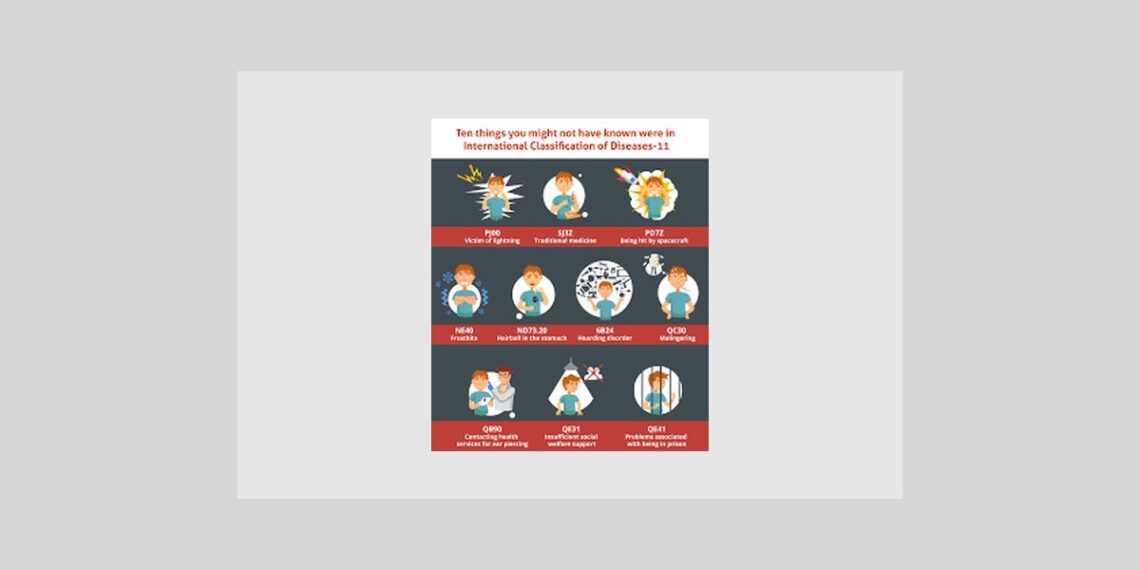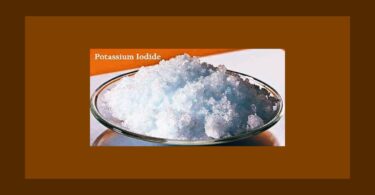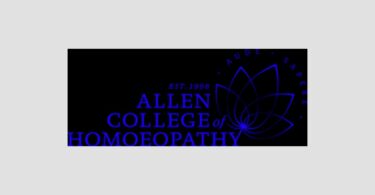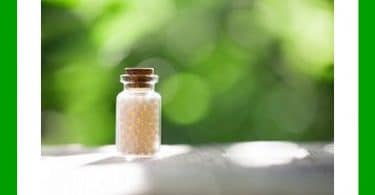Introduction
The basic rules for homeopathic treatment we can find in Hahnemann’s “Organon of medicine” and “Chronic diseases”. To me it is still amazing how brilliant and complete Hahnemann’s homeopathic solutions are for today’s health problems.
But it is rather difficult to discover the main path of Hahnemann’s philosophy. Possibly the first one who discovered it was H.A. Roberts, who was also the first one to use the term “disease classification”. (01)
In general the theory can be found in “Organon” and the application in “Chronic diseases.” The main distinction is between acute and chronic diseases. This is essential to realize a good plan of treatment. Acute diseases are fast and intense, chronic illnesses come on slowly, almost sneakily in the beginning, with a slow progress to more and more discomfort.
In the following I will discuss this distinction on the basis of Hahnemann’s system, called Disease Classification. It is important to emphasize that Hahnemann’s first focus was on the disease, not on the diseased, which is an essential part of the disease classification method.
Starting with par. 71 (02), of the Organon of Medicine, Hahnemann has three important questions:
-
- How is the physician to ascertain what is necessary to be known in order to cure disease?
- How is he to gain knowledge of the instrument adapted for the cure of the natural disease, the pathogenetic powers of the medicines?
- What is the most suitable method of employing these artificial morbific agents (medicine) for the cure of natural disease ?
In this essay we will concentrate on the first question. Finally, you will find a scheme of how this works in practice.
I. What is necessary to know to cure a disease ?
(Par. 72, regarding the first question)
“The following will serve as a general preliminary view.
The diseases to which man is liable are:
-
- (acute disease) either rapid morbid processes of the abnormally deranged vital force…………….
- (chronic disease)…….or they are diseases of such a character that, with small often imperceptible beginnings, dynamically derange the living organism, each in its own peculiar manner, and cause it gradually to deviate from the healthy condition, in such a way that the automatic life energy, called vital force, whose office is to preserve the health, only opposes to them at the commencement and during their progress can offer only imperfect, unsuitable, useless resistance, but is unable of itself to extinguish them, but must helplessly suffer to be ever more and more abnormally deranged, until at length the organism is destroyed. These are termed chronic diseases. Causation: a dynamic infection with a chronic miasm.”
Comment on Acute dis-ease
An acute dis-ease comes and goes fast. The course is intense, with high fevers, diarrhoea, etc.. Acute diseases disappear without interference if the patient is healthy. In fact it is a natural response to a potential harmful virus or bacteria. When the intestines are infected by food poisoning, diarrhoea will occur and clear the intestines effectively of the bad bacteria.
When in a healthy state, our immune system is a wonderful system, called the immuno-neuro-response system, which detects in seconds a potential harmful “invader” and creates the most effective response. Our body has evolved to defend 15,000 “attacks” of free radicals every day. If somebody is smoking cigarettes he or she quite easily exceeds this limit. Unhealthy eating habits, alcohol and environmental pollution makes us exceed the limit more easily, causing more health problems (03) Acute diseases are, according to Hahnemann, subdivided into:
- Individual diseases:
1. Acute brief physical affections: The patient has become ill because of harmful influences, such as excesses or insufficient supply of food, trauma, chills, poisoning, overheating, exhaustion, etc.
2. acute psychic illnesses;
3. acute infections of a latent miasmatic disease: a dormant, not active, miasm (inherited chronic disease) can become active through an incident (in most cases a stressful situation). When the stress is over the disease goes into a dormant state again. Actually these flare ups get continually worse.
- Collective diseases:
- epidemics;
- acute recurrent miasmatic diseases, which may be either a onetime event such as small pox, measles, whooping cough etc., or recurrent such as yellow fever, cholera, etc.
2. Chronic diseases
Hahnemann on Chronic diseases
(par. 72)….or they are diseases of such a character that, with small often imperceptible beginnings, dynamically derange the living organism, each in its own particular manner, and cause it gradually to deviate from the healthy condition…but is unable to extinguish them…
78: the true natural chronic diseases are those that arise from chronic miasms, which when left to themselves and unchecked by the employment of those remedies that are specific for them (nosodes, see Chronic Diseases, CvdM)), always go on increasing and growing worse, notwithstanding the best mental and corporal regimen, and torment the patient to the end of his life with ever aggravated sufferings.
103: Remedy picture
“the miasmatic chronic maladies remain the same in their essential nature, especially the psora, and must be investigated as to the whole of their symptoms…..one patient only exhibits a portion of their symptoms……..the whole array of the symptoms belonging to such a miasmatic, chronic disease and especially psora, can only be ascertained from the observation of very many single patients affected with such a chronic disease and without a complete survey and collective picture of these symptoms the medicines capable of curing the whole malady homeopathically cannot be discovered; and these medicines are, at the same time, the true remedies of the patients suffering from such chronic affections.”
Comment
In the beginning, chronic diseases are steathily present and have little to no effects on our health system. The patient feels himself literally dis-eased. Sometimes the disease appears rather suddenly as a kind of acute illness, fading away with time. But, it does not really go away, rather it disappears under the surface. Again and again, and more often it reappears, disintegrating one’sr health more deeply. Homeopathically it is essential to notice that a chronic miasm is not the same as a chronic disease. In fact it is an inherited (genetic) predisposition passed down by one or more members of your family. Without the right miasmatic treatment, a chronic disease will bring your health system increasingly more out of balance.
Chronic disease is the plague of our time. Never in history have so many people had chronic disease. Some say that the fact that we grow older is the cause of it. But if this is the case, how is it possible that in 2008 in Holland twenty percent of children between four and ten have a chronic illness (04)
Allopathy has no real answer to chronic diseases. Surely, with medication the most troubling symptoms are suppressed. However, real permanent cure is not possible. The main focus is on the symptoms, not on the cause of the disease. And the worst part is still to come. Most allopathic medication brings side effects, which oblige the doctor to prescribe more medication, creating other side effects. This causes a downward spiral effect in the patient and leads to more iatrogenic diseases. For the homeopath who meets a patient in this state it becomes more difficult to distinguish the chronic miasmatic part of the patient from the iatrogenic part. What you see is a mixture of symptoms of these two parts.
It must be clear now that, although homeopathic cure in most cases is possible, the way to cure takes a long time with a growing number of ups and a decreasing number of downs. It is important to tell your patients that homeopathy is not some kind of miracle. With homeopathic remedies we help the vital force, the life force, to start the healing process. The healing process is a process of our body that has habits of its own. It goes on its own pace and you cannot hasten it. You must keep in mind that you can help the healing process by a healthy lifestyle.
3. Pseudo chronic diseases
Par. 77:
“Those diseases are inappropriately named chronic which persons incur who expose themselves continually to avoidable noxious influences, who are in the habit of indulging in injurious liquors or aliments, are addicted to dissipation of many kinds which undermine the health, who undergo prolonged abstinence from things that are necessary for the support of life, who reside in unhealthy localities……who are deprived of exercise or of open air, who ruin their health by over exertion of body or mind, who live in a constant state of worry, etc. These states of ill-health, which persons bring upon themselves, disappear spontaneously, provided no chronic miasm lurks in the body, under an improved mode of living, and they cannot be called chronic diseases.”
Comment
4. Iatrogenic diseases
Par. 74, 75, 91
74:
“Among chronic diseases we must still reckon those so commonly met with, artificially produced in allopathic treatment by the prolonged use of violent heroic medicines in large and increasing doses ….etc, whereby the vital energy is sometimes weakened to an unmerciful extent….in such a way that, in order to maintain life against these inimical and destructive attacks, it must produce a revolution in the organism……cause dilatation or contraction, relaxation or induration or even total destruction of certain parts, and develop faulty organic alterations here and there in the interior or the exterior in order to preserve the organism from complete destruction of life by the ever-renewed, hostile assaults of such destructive forces.”
75:
“These inroads on human health effected by the allopathic non- healing art are of all chronic diseases the most deplorable, the most incurable, and I regret to add that it is apparently impossible to discover or to hit upon any remedies for their cure when they have reached any considerable height.*
Comment
In Hahnemann’s day it was rather simple to identify the origin of iatrogenic diseases, because of the simple and uncomplicated medication. Nowadays, iatrogenic diseases are not only the third cause of death but in cases of chronic disease it is very complicated to identify what symptoms are caused by the disease and which by the (side effects of the) medication. This is the more complicated when a patient is taking multiple allopathic remedies. This is often the case when the first remedy causes side effects, for which a second prescription is given, which again can cause new side effects, etc. I identify this as the multiple medication syndrome. Sometimes a patient gives me a list of ten different allopathic remedies. When I ask him if he feels better nowadays, the answer is always a steady no. Dealing with this multiple medication syndrome sometimes can be the main goal in the beginning, for which several homeopathic remedies are suited, like Sulphur, Nux vomica, Lycopodium, etc. In children you have to be aware of side effects of recent vaccinations, but this can also be the case in adults (travel vaccination).
It is also essential to be aware of the complications that are caused by the use of allopathic medicines which block the effect of homeopathic treatment. E.g. this is often the case when medication is used with hormonal components.
Vaccination
Another branch in the tree of chronic disease is vaccination.
Evidence is showing more clearly that vaccination contributes to the development of chronic disease. Veterinary doctors have noticed that vaccination in animals causes several kinds of problems. Firstly it is not uncommon that after some time at the spot of vaccination, an aggressive type of tumor grows. Furthermore, increasingly more animals are getting chronic diseases, such as cancers. [05] Dr. Hamilton asks himself this question: “What is the function of acute, infectious illness? Is there something we do not understand yet?” Eventually he states: “Vaccination is trading acute illness for chronic disease.”
The main problem is that vaccination causes degrading of our immune system. This process can be seen on two levels:
- In children we notice that children who are not vaccinated and get childhood diseases like the measles, are far more resistant to chronic diseases as an adult;
- The vaccination program for seniors against the seasonal flu creates a surprising side effect: since the start of the program substantially more seniors die of seasonal flu.
In my opinion, there is possibly a third side effect of vaccination.
Vaccination may sometimes function as a traumatic incident for certain patients. These patients are more sensitive to outer influences and in this case the vaccine can be a trigger to an underlying miasm.
The vaccine can be seen as the spark to the tinder. This can explain why we sometimes see a strong reaction shortly after vaccination, leading to serious health problems. Adequate homeopathic treatment can effectively help here. Mainly, there are two types of treatment:
- Anti vaccine treatment: Here the vaccine in homeopathic dose is used.
- Treatment as an acute illness: Focus on the main symptoms and use the appropriate remedy.
Help of an expert homeopath is necessary in both cases. There is also the possibility of prophylactic treatment with homeopathy according to the homeoprophylaxis method of Dr. Isaac Golden (06). Dr. Golden uses nosodes of the particular infectious disease. His method is based on 20 years of experience in which a level of protection is reached comparable to standard vaccination.
Summary
First I want to thank my Dutch colleague Ewald Stoeteler, for his inspiring and passionate A and B course on Disease Classification at the Homeopathie Academie Nederland. The art of Disease Classification is purely based on Hahnemann’s two main books, Organon and Chronic diseases. As a summary I have included a schema, based on Stoeteler’s courses, in which the essentials of disease classification are given.The schema gives a survey of the disease classification method, not an in depth explanation. Because it is a general schema, it is not suited for individual treatment.
| Disease classification | Homeopathic treatment(according to Hahnemann) |
| Acute diseases:3 forms:
1) incidents, caused by an accident/trauma; 2) Intermediate: caused by an epidemic, for which one is liable; 3) chronic/constitutional: an acute trigger of a chronic miasmatic disease |
Acute complaints can best be treated with vegetable remedies, which heal the serious complaints quickly. Hereafter the treatment is continued on the miasmatic basis, which is in most cases the real cause. |
| Iatrogenic diseases:Certain allopathic medication is harmful for our health; e.g.hormonal medicines, vaccination, antibiotics; in general 1 out of 4 illnesses is caused by iatrogenic influences. | Treatment can be started with anti-iatrogenic remedies, such as Nux V, Sulphur, etc. Sometimes it is necessary to use an isopathic remedy.Afterwards the treatment can be continued with antimiasmatic remedies. |
| Pseudo chronic diseases:unauthentic chronic diseases caused by life style, habits, work or living environment, pollution (air, water); this disease is not really chronic; changing
life style/habits/environment can stop the disease |
Cure can be realised by stopping the illness making life style influences.Afterwards the real cause is often found in miasmatic influences, which can be treated then. |
| Miasmatic diseases:certain diseases can be transmitted from parents to children. Some of these are not directly exhibited after birth; these miasmatic diseases are dormant and can be triggered by certain incidents (e.g. stressfull situations, vaccination, lifestyle) | Miasmatic diseases can be treated with antimiasmatic, i.e. antipsoric, antisyphilitic or antisycotic remedies. It must be clear that combinations of these miasms can be formed, which complicates the homeopathic treatment. |
Note: This schema is not suited for individual treatment
01: Dr. H.A. Roberts: The Principles and Art of Cure by Homoeopathy
02: S. Hahnemann: Organon of Medicine, with commentary by R. Murphy
03: .Supplement, nr. 12, 2009, pg 14
04: Dutch Central Bureau Statistics, 2008.
05: Don Hamilton: “Homeopathic Care for Cats and Dogs
06: Dr. S. Golden: Vaccination and Homeoprophylaxis





Mr.Cor van der Meij deserves gratitude & thanks of high order. His discussion throws light on Vaccination & its side effects is one of its kind. I never saw any paper before. Ir males this article most useful to the recent pass outs. Thanks
THANKYOU FOR YOUR NICE EXPLANATION.REGARDING THE VACCINATION SIDE- EFFECTS, GIVE SOME EXAMPLES OF DISEASES.CAN WE TAKE DIABETES AS A COUNTER ACTION OF VACCINATION?
Dear dr. Diaz: thank you for your nice comment. Regarding diseases triggered by vaccination you can think of any kind of miasmatic chronic disease. In my opinion diabetes is a disease primarily caused by life style ( pseudo chronic) and not by a miasmatic cause. An exception is nephrogenic diabetes, which has a heriditary origin.
Drear Sir,
You are right when you say that it was Roberts who used the term ‘disease classification’ for the first time, not Hahnemann.Hahnemann is remembered for his discovery of the principle of “similia similibus curantur” which was actually a revolutionary new idea and new insight into the mysteries of nature, and this discovery deserves the highest honor of mankind not his classification. There is nothing new in disease classification, it sounds like some Holistic healing system or Indian Ayurveda where slightly different types of disease classifications already existed.
Also it is not possible and not advised by Hahnemann to make a pre-planned treatment, rather his teachings tell us not to be prejudiced or have any favoritism while selecting a remedy. the procedure is like when playing a game of chess, after making a move wait for the response of your opponent before making the next move.That way after the administration of a dose of the correct remedy, wait until the modified disease picture is clear again, then give the next remedy fitting the new totality of symptoms. The classification is not to be used as a pointer to any particular remedy. I could save the life of a cattle,4 months pregnant cow with a dose of calc carb on indications “dread of water & bathing” and aggravation coincided with fullmoon. Two vets had failed to make the cow stand up on its legs and nearly a month this condition lasted when my assistance was sought. A senile parkinsons patient who searched the house club in hand for an imaginary intruder who stood by the bedside, much improved after I gave a dose of medohhrinum 1M, referring the symptom in Kent Repertory. Disease classification was not relied on in both cases ! Only the symptom similarity was the guide in selecting those remedies. When diseases require more than one remedy also,Miasm is not the factor for selecting your second or subsequent remedies. Hahnemann had warned not to give the remedy you thought is the second most suited one, without again taking the case a fresh ! Hence no wonder if more rationally thinking homeopaths consider Disease classification as a unnecessary “Ritual” with little practical use. “Love of ease” on the part of a homeopath is one of the three mistakes he should avoid as per the Master.
Dear Venkatesh,
in my opinion I did not suggest that *disease classification* is something new.
I simply pointed out that if you follow Hahnemanns intentions as mentioned in Organon and Chronic Diseases the result of your work is disease classification, according to Roberts. The term in itself is nothing more than a name for something Hahnemann did: he distinguished acute and chronic diseases and then he subdivided the chronic diseases. In his book *Chronic diseases* one can find very specific information on remedies to be used in acute and chronic cases.
Furthermore your opinion that results can be realised with Kents repertory I can and will not deny, especially not in acute cases. The essential difference however is seen in chronic cases. Here Hahnemann himself came to the conclusion that it is not possible in chronic diseases to realise permanent cure with plant remedies. Most chronic diseases are based on one or more miasms. To have a realistic chance to cure these cases one has to use anti miasmatic remedies as Hahnemann has explained extensively in *Chronic diseases*.
So I must conclude that disease classification as Hahnemann used is not a goal in itself, but a very helpful tool to cure the case.